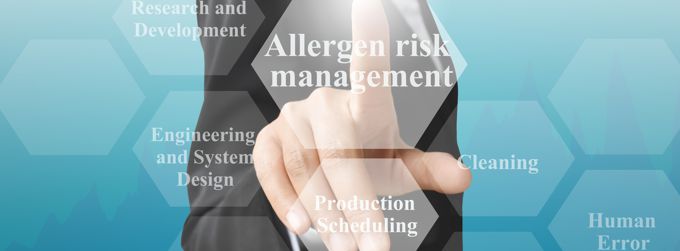
Why This Matters
Undeclared allergens are the leading cause of food recalls in the U.S., accounting for nearly half of all recall events in 2024. Of those label-related recalls, a staggering 83.85% stemmed from undeclared allergens. The average cost of a single recall? $10 million, not including lawsuits, reputational damage, or lost sales.
What Auditors See That You Might Miss
Auditors don’t just look at your label—they trace allergen risk through your entire system. Here’s where undeclared allergens often hide:
- Shared tools: Scoops, slicers, or utensils used across allergen and non-allergen products.
- Rework: Reintroducing product into the system without allergen traceability.
- Label printing: Manual label entry or outdated templates that miss allergens.
- Ingredient swaps: Last-minute substitutions not reflected in the label.
- Sanitation gaps: Incomplete cleaning between allergen runs, especially in dry environments.
What Auditors See That You Might Miss
Auditors don’t just look at your label—they trace allergen risk through your entire system. Here’s where undeclared allergens often hide:
- Shared tools: Scoops, slicers, or utensils used across allergen and non-allergen products.
- Rework: Reintroducing product into the system without allergen traceability.
- Label printing: Manual label entry or outdated templates that miss allergens.
- Ingredient swaps: Last-minute substitutions not reflected in the label.
- Sanitation gaps: Incomplete cleaning between allergen runs, especially in dry environments.
How to Build Auditor-Visible Allergen Control
- Labeling: Automate label control and link it to approved formulations. Use mock audits to verify label accuracy.
- Separation: Create visual zoning, color-coded tools, and time-based scheduling to isolate allergens.
- Spill Clean-Up: Develop a technician-proof SOP with allergen-specific response steps and disposal protocols.
- Cleaning Validation: Use swabbing, ATP testing, or visual checks to confirm allergen removal—especially in dry clean areas.
- Create an allergen flow map: Show where allergens enter, move, and exit your system.
- Train for competence, not just compliance: Use verbal checks, not just sign-offs.
- Audit your sanitation program: Validate allergen removal with swabbing or visual checks.
Final Thought
Allergen control isn’t just about avoiding recalls—it’s about protecting lives. Auditors see beyond the label. So should you.
Leave a Reply